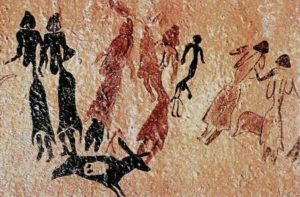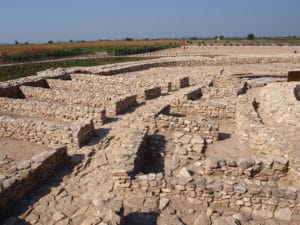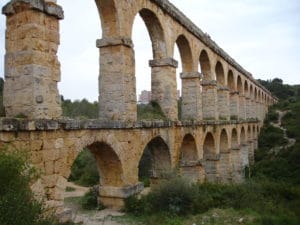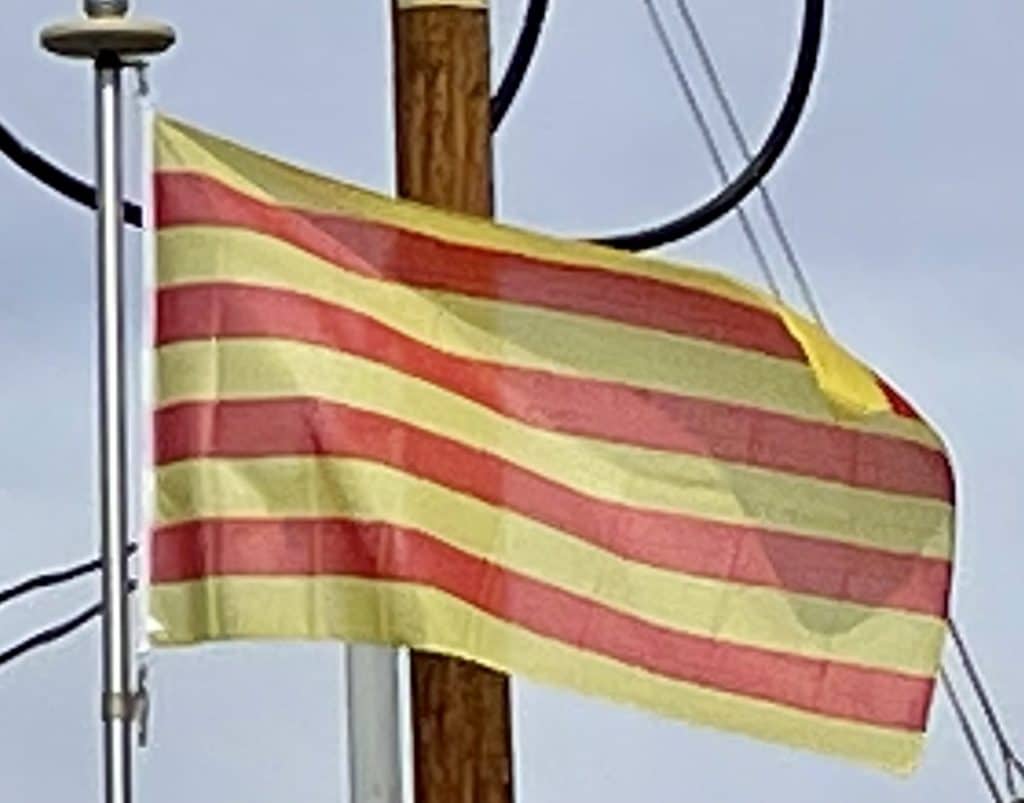
The Neolithic era began in Catalonia around 5000 BC, although the population was slower to develop fixed settlements than in other places, thanks to the abundance of woods, which allowed the continuation of a fundamentally hunter-gatherer culture. An example of such settlements would be La Draga, an “early Neolithic village which dates from the end of the 6th millennium BC.”
The Chalcolithic period developed in Catalonia between 2500 and 1800 BC, with the beginning of the construction of copper objects. The Bronze Age occurred between 1800 and 700 BC. There are few remnants of this era, but there were some known settlements in the low Segre zone. The Bronze Age coincided with the arrival of the Indo-Europeans through the Urnfield Culture, whose successive waves of migration began around 1200 BC, and they were responsible for the creation of the first proto-urban settlements. Around the middle of the 7th century BC, the Iron Age arrived in Catalonia.
Pre-Roman and Roman Period:
In pre-Roman times, the area that is now called Catalonia in the north-east of Iberian Peninsula – like the rest of the Mediterranean side of the peninsula – was populated by the Iberians. The Iberians of this area – the Ilergetes, Indigetes and Lacetani (Cerretains) – also maintained relations with the peoples of the Mediterranean. Some urban agglomerations became relevant, including Ilerda (Lleida) inland, Hibera (perhaps Amposta or Tortosa) or Indika (Ullastret). Coastal trading colonies were established by the ancient Greeks, who settled around the Gulf of Roses, in Emporion (Empúries) and Roses in the 8th century BC. The Carthaginians briefly ruled the territory in the course of the Second Punic War and traded with the surrounding Iberian population.

After the Carthaginian defeat by the Roman Republic, the north-east of Iberia became the first to come under Roman rule and became part of Hispania, the westernmost part of the Roman Empire. Tarraco (modern Tarragona) was one of the most important Roman cities in Hispania and the capital of the province of Tarraconensis. Other important cities of the Roman period are Ilerda (Lleida), Dertosa (Tortosa), Gerunda (Girona) as well as the ports of Empuriæ (former Emporion) and Barcino (Barcelona). As for the rest of Hispania, Latin law was granted to all cities under the reign of Vespasian (69-79 AD), while Roman citizenship was granted to all free men of the empire by the Edict of Caracalla in 212 AD (Tarraco, the capital, was already a colony of Roman law since 45 BC). It was a rich agricultural province (olive oil, vine, wheat), and the first centuries of the Empire saw the construction of roads (the most important being the Via Augusta, parallel to Mediterranean coastline) and infrastructure like aqueducts.

Conversion to Christianity, attested in the 3rd century, was completed in urban areas in the 4th century. Although Hispania remained under Roman rule and did not fall under the rule of Vandals, Swabians and Alans in the 5th century, the main cities suffered frequent sacking and some deurbanization.
Middle Ages:
After the fall of the Western Roman Empire, the area was conquered by the Visigoths and was ruled as part of the Visigothic Kingdom for almost two and a half centuries. In 718, it came under Muslim control and became part of Al-Andalus, a province of the Umayyad Caliphate. From the conquest of Roussillon in 760, to the conquest of Barcelona in 801, the Frankish empire took control of the area between Septimania and the Llobregat river from the Muslims and created heavily militarized, self-governing counties. These counties formed part of the historiographically known as the Gothic and Hispanic marches, a buffer zone in the south of the Frankish empire in the former province of Septimania and in the northeast of the Iberian Peninsula, to act as a defensive barrier for the Frankish empire against further Muslim invasions from Al-Andalus.
